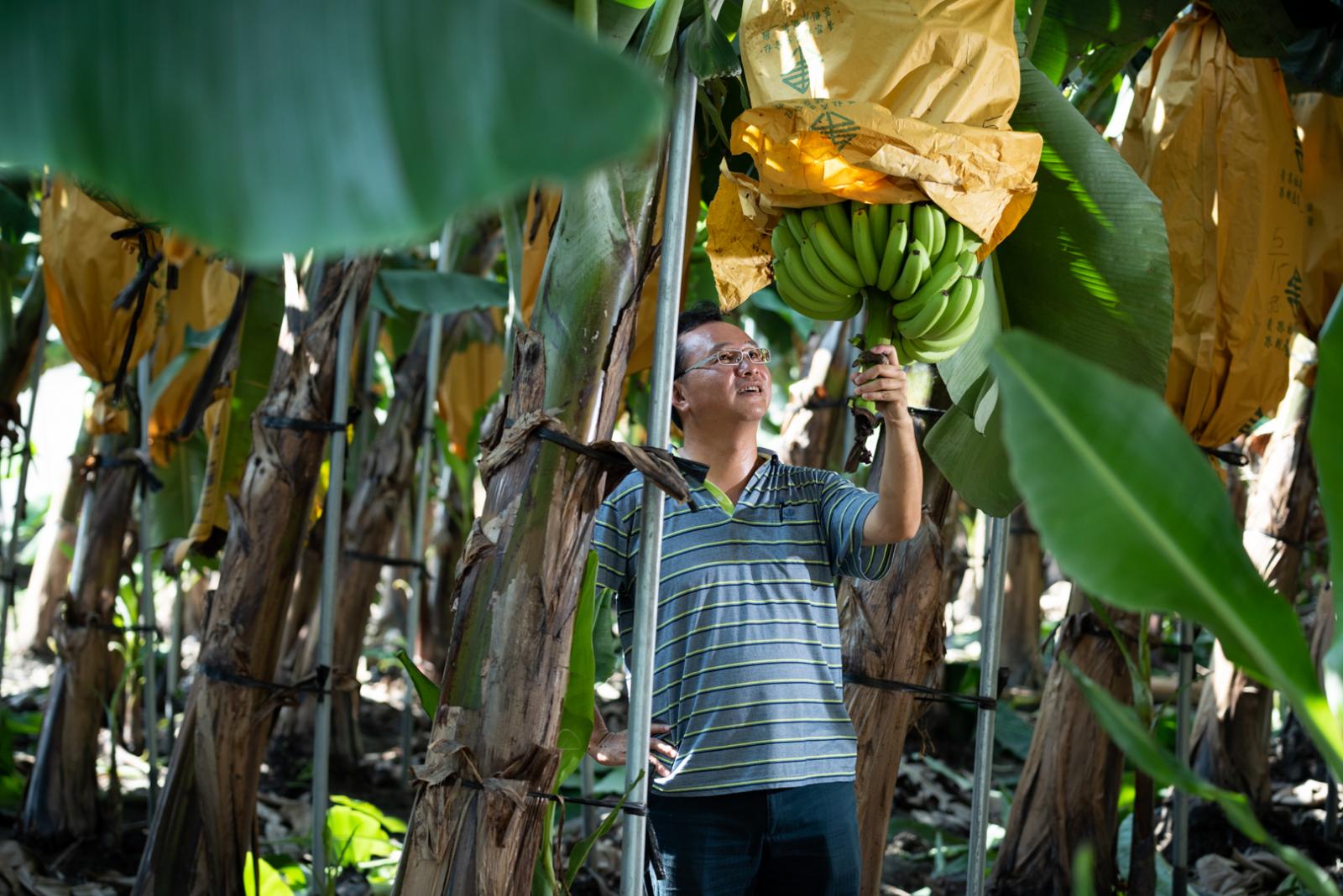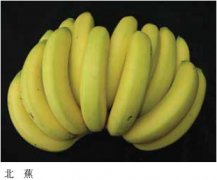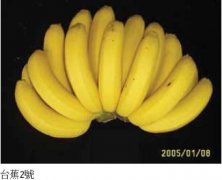Fight against banana yellow leaf disease: Taiwan's first tissue culture seedling Taijiao No. 1, banana farmers found out the truth from the soil
Banana terminal yellow leaf disease has taken root in Taiwan for more than 50 years. Taiwan Banana Research Institute, a leader in banana research in Taiwan, has repeatedly set world precedents for the research and development of banana seedlings and a number of disease-resistant banana varieties. Professional banana farmers have developed planting techniques to transform the soil and coexist with the disease. According to statistics, the average incidence of yellow leaf disease in banana plantations in Taiwan has dropped to about 15%.
Research and development of tissue culture of banana seedlings to slow down the spread rate, disease-resistant varieties to reduce the risk of infection
Because of asexual reproduction, bananas grow a lot of sucking buds from their bulbs. In the past, farmers mostly dug up the sucking shoots and planted them again. The Taiwan Banana Research Institute found that if banana farmers dig and absorb buds from banana gardens infected with yellow leaf disease and replant them, the pathogens will spread faster, and if they are planted in new farmland, there is a great chance that they will suffer, so they set the world's first case in 1983. "tissue culture of banana seedlings" was developed.
Liu Shengxing, a healthy seedling cultivation group at the Taiwan Banana Research Institute, said that the so-called tissue culture banana seedlings are first selected in the field and taken back to the aseptic chamber for cutting. There will be a growth point in the middle of the bud absorption seedlings, and cutting the growth point can produce adventitious buds, which can be put into a culture bottle for culture and domestication.
Tissue culture banana seedlings will first select excellent plants in the field, take the sucking buds and bring them back to the sterile room for subculture.
By analogy, Taiwan Banana Research Institute has a total of six generations, and a bottle of culture bottle will have more than 10 adventitious buds, which can be domesticated in indoor domestication room and outdoor domestication field, respectively, and can be transplanted to nursery for planting. When the banana seedlings grow to about 15 cm high, they can be sold to farmers. It takes one month for each stage to subculture and multiply from sucking bud seedlings. Coupled with domestication and nursery planting, the production time of whole banana seedlings is about 8-10 months.
However, Zhao Chih-ping, director of the Taiwan Banana Research Institute, said that although tissue culture of banana seedlings ensures that the seedlings planted by farmers are healthy, they can only slow down the incidence of the disease and cannot reduce the risk of contracting yellow leaf disease in banana plantations. This is because if the soil is too acidified or poor drainage, even new farmland may still be infected with yellow leaf disease.
As the saying goes, the mountain does not turn, the road does not turn, people do not change their minds. When developing tissue-cultured banana seedlings, Taiwan Banana Research Institute found that about 3% to 5% of banana seedlings' growth hormone would induce somatic cells to mutate, from which there was an opportunity to find some varieties resistant to yellow leaf disease.
After years of subbreeding, Taiwan Banana Research Institute officially launched Taisao No. 1 in 1992. At the initial stage of promotion, the planting area was as wide as 1,000 hectares, but because of its poor adaptability to soil and climate, disease resistance was easily weakened due to improper cultivation and management or increased density of soil bacteria, and gradually withdrew from the planting option of banana farmers.
After domestication inside and outside, the tissue culture seedlings have to be transplanted to the nursery for planting.
Over the past 20 years, the Taiwan Banana Research Institute has successively developed varieties resistant to yellow leaf disease, such as Jiao 3, Baodao, Taicao 5, and Taijiao 7, through the somatic mutation breeding techniques of Beijiao. Some plants are shorter and sturdy, with the advantages of wind resistance and labor saving, such as Taicao No. 3; others have a high yield, such as Baodao banana, which can weigh up to 45 kilograms per plant, about twice as much as Beijiao, but because the growth period is 13.5 months, which is longer than Beijiao, coupled with the fact that it is more painstaking to control thrips at heading stage, it is not very popular with banana farmers.
At present, the most widely cultivated by banana farmers is Taijiao No. 5, commonly known as Yushan. Chao Chih-ping says that from planting to harvesting for almost a year, the yield of Taijiao 5 is about the same as that of Beijiao, and its fruit shape and flavor are very similar to those of Beijiao. In terms of export, there will not be much difference with Beijiao mixed, so even if there are other varieties with higher disease resistance and higher yield, banana farmers prefer to grow Taijiao 5 under the influence of the market.
Soil transformation shows that banana farmers learn to coexist with yellow leaf disease.
At the same time, banana farmers have gradually developed management techniques that coexist with yellow leaf disease. For example, Kuo Ming-Ming, a banana farmer in Qishan District, Kaohsiung City, has been designated by Japan's IPM Nishimoto Co., Ltd., which has been supplied for many years, to harvest only northern bananas. Although he has not changed to other disease-resistant varieties over the years, he has gradually come up with a set of "hard principles" from the soil.
Kuo Ming-Ming points out that in the past, chemical fertilizers were spread heavily, and the sulfate and chlorine in them made the soil acidified and hardened. Yellow leaf disease likes to stay in this environment, so choose some relatively alkaline fertilizers or organic fertilizers to adjust the pH value of the soil. If it is about 6 or 5.5, the disease rate of banana plantations will not be so high.
In addition to soil management, in principle, Guo Ming buys healthy seedlings with the Taiwan Banana Research Institute in the first year, and after they are planted in the second year, they will be renewed once, that is, they will buy healthy seedlings to replant. In this way, the yellow leaf disease can be controlled at about 20% by the second year.
As for the diseased banana plant, "We just leave it alone and let it wither, because even if it is removed, there will still be bacteria in the soil, and if it unfortunately spreads, it will be yellow leaf disease." "in the face of this situation, Guo Ming will make special efforts around the soil of diseased plants to adjust the pH value to make it difficult for pathogens to survive.
The banana bunches harvested have to be transported to the packing yard by cart for grading and sorting.
Yu Zhirong, a banana farmer in Pingtung County, who planted disease-resistant varieties such as Taisao No. 5 and Taisao No. 7, asked himself that the incidence of yellow leaf disease in banana orchards should not exceed 3% in the first year, so that it would be possible to control the disease rate within 20% in the third year.
Yu Zhirong, like Guo Ming, focuses on fertilizer management, putting more organic fertilizers and less chemical fertilizers, and improving the soil. He says the key is not to damage the roots in the fertilization process, because once the roots are damaged, they will have a chance to let pathogens in. The disease rate will naturally increase. In addition, he also has a "magic weapon". When he rotates rice for three years, he will use the rice stalks after harvesting as soil fertilizer instead of burning. In the second stage, he will rest to cultivate green manure such as sesbania, and in the third phase, he will grow legumes.
"you see, rice stalks, sesbania, and pods are all natural organic fertilizers. When you come back to grow bananas, the soil will be very fertile, and chemical fertilizers will naturally be reduced. "after more than 10 years of operation by Yu Zhirong, the pH value of the soil has slowly risen from 4.6 to 6.2, which is close to neutral. Yellow leaf disease does not like this environment very much, but for bananas, after a year of rice rotation, the soil gap becomes larger and the roots grow more sound.
In addition, Yu Zhirong stressed that irrigation is also a major focus, because yellow leaf disease will spread with the current, and his banana plantation now uses sprinkler irrigation to replace the traditional mode of flowing from head to tail. The sprinkler line is pulled to the end at once, and the irrigation is unified to water. The rate of spread of yellow leaf disease can be reduced.
Yu Chih-jung, who grows 40 hectares of bananas in Pingtung County, has gradually developed a soil management model that coexists with yellow leaf disease over the years.
When dealing with banana plants infected with yellow leaf disease, Yu Zhirong also adopts the "ignore it" mode, but will reduce mechanical damage as much as possible, that is, personnel will use another set of machines to deal with them during operation, or the knives should be disinfected after using them, so as to avoid cross-contamination of pathogens.
"in the face of yellow leaf disease, no one can be left alone, so when it comes to investing in the banana industry, I think we should look at it from the perspective of one-stage investment and long-term amortization, and take good care of the soil at all. "Yu Zhirong said.

- Prev

What are the common banana varieties? What is the difference between North Banana/Immortal Banana and Treasure Island Banana Fruit?
Do you like bananas? Do you know what kinds of bananas are sold in the market? Do you want to know? Let's take a look at the introduction of the following three banana varieties! North banana alias: no source: in the Qing Qianlong period (1736-1795) from South China
- Next

Introduction of Taiwan banana variety Taisao 2, banana growth habits and resistance to yellow leaf disease
The existing banana varieties in the province are mainly Cavendish and Xianren bananas, which are of medium-high type and are not easy to be managed and harvested. At the same time, it is often damaged by the wind. The dwarf banana plant of Babedo is short and strong, which can reduce the loss of wind damage, reduce labor and improve the banana garden.
Related
- A course of planting techniques and methods on how to grow carrots
- How to plant the latest tulips?
- Is it better to pick tea in the morning or in the afternoon? When is the best time for tea to be picked? what is the third or fifth tea?
- Launch Yuanxiao Happy combination Haocha + Tea Yuan healthy Taste
- Penghu Tourism "Fireworks 20 Parade with You"
- 2022 West Lake Happiness holds "Digital Revitalization Voucher" and draws iphone13 and laptop.
- Banqiao Fuzhou social houses are designed to change start-up combined with police elimination to create a safe and livable environment
- The convenient measure of "mechanical weeding" in Xinbei has been abused and the Agriculture Bureau has imposed heavy penalties on the illegal land consolidation.
- Changgeng University Joins Hands with Four Memory Factories to Rescue Memory Talent Shortage
- The list of Taiwan's top 100 MVP managers is listed by the Director-General of the Farmers' Association of Sanxia District.

